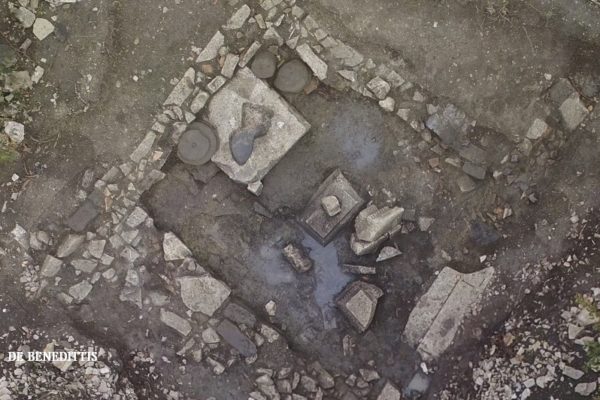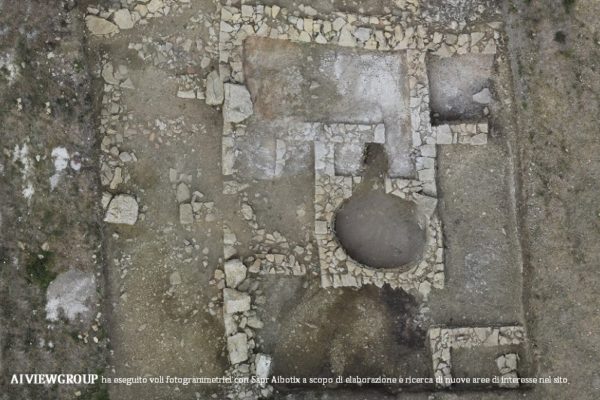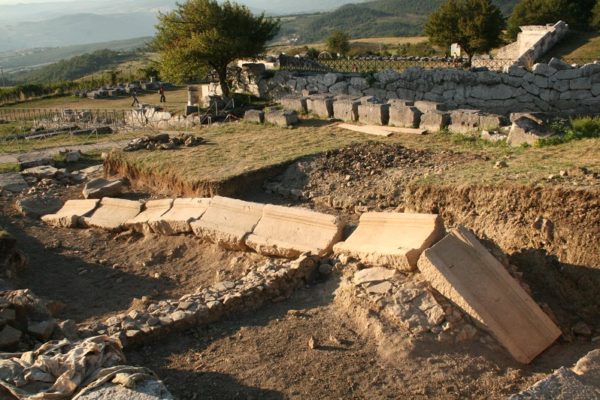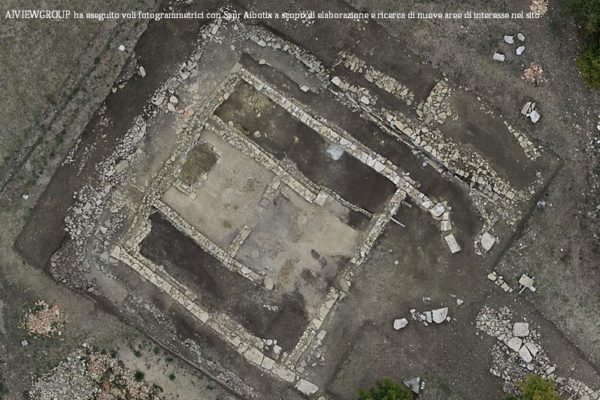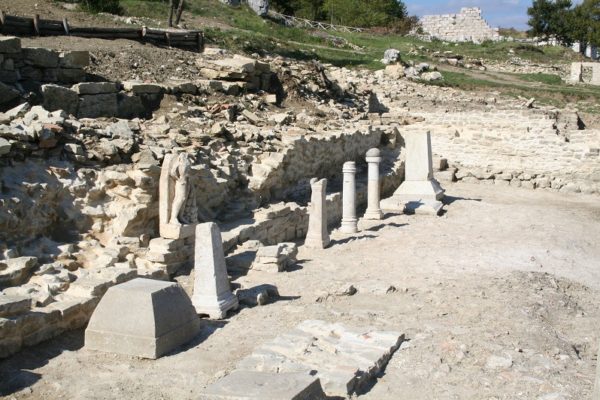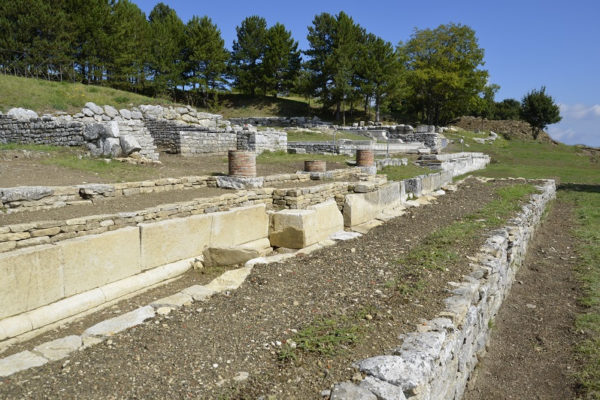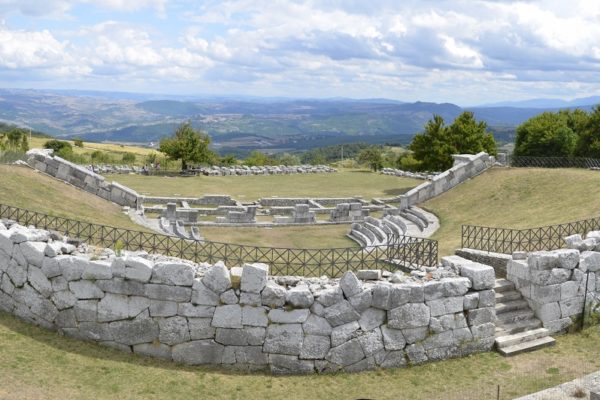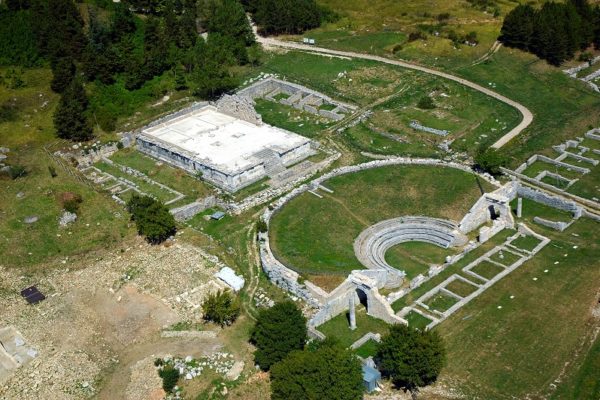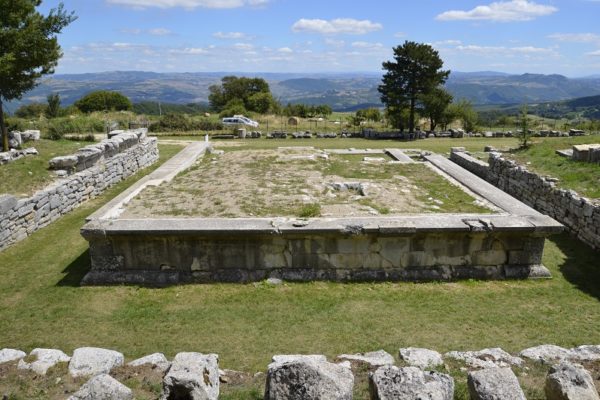The Eastern Sanctuary Sacellum
The structure consists of three areas standing in line, of which only the central one has been investigated. The latter, square in plan, houses the remains of an altar, the large base of a statue set against the back wall and some recovered important architectural elements that testify to the
Structures on the East of Temple B
To the east of Temple B a new area was identified, characterized by the presence of a building, partially excavated, with a complex floor plan and within which a circular area can be identified. In some parts it retains the cocciopesto paving, relative to the earlier ‘trodden’ flooring. It is
The Unfinished Construction Site
North of the theater there is an area notable for the presence of eight moulded blocks of limestone, these being in a row and in unfinished condition. This is an ancient workshop, where the stonemasons suddenly interrupted their work, leaving the stone in an unfinished state. On the surface of
Aerarium and Small Stoà
In the eastern area of the site, exploration has been carried out on the aerarium (treasury) and, behind it, the small stoà, made up of three rooms overlooking the porticoed area and intended to guard the offerings of the faithful. The complex was built in the late third century B.C.,
Domus Publica and Stoà
Built between the late second and early first century B.C., the domus publica of the sanctuary had the function of hosting priests, judges and ambassadors. The size and architectural features are those of the great Italic-Roman aristocratic homes of the Republican era, from which however the domus is distinguished by
Tabernae
The area of the tabernae develops between the theater-temple A and temple B complex and it is composed of two parallel terraces. The highest terrace corresponds to the earliest frequency of attendance and includes two little sanctuaries (the first half of the second century B.C.) It is built on a
The Theatre
Between the late second and early first century B.C. the construction of the theater complex - Temple B began, its architecture falling into the category of Italic Hellenism. The space reserved for spectators (cavea) is divided into an upper portion (summa cavea) and a lower portion (ima cavea), separated by
Temple B
The temple B stands on a high podium behind the theater and they together constitute a monumental complex built according to a unified project. The presence of numerous inscriptions has rendered possible the identification of the state of the Samnites as those who commissioned this large building project. The largest
Temple A
Temple A, built at the beginning of the 2nd century B.C. on a monumental terrace, stands on a podium with four frontal columns and a single inner chamber. Of the decorations, conserved in situ are the lion’s head protomes, which decorated the cornice and part of the frieze in Doric

